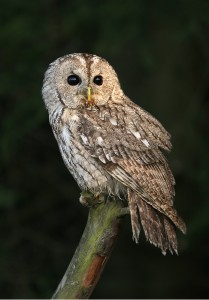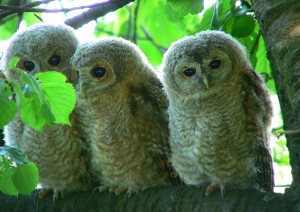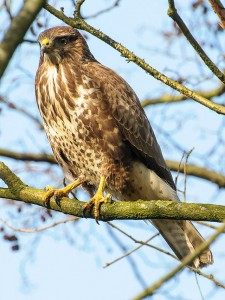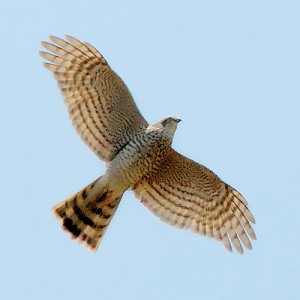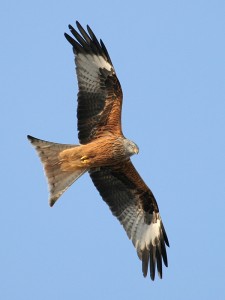The night before last I was awake between 3 and 5 am (I know that much as I heard the village church clock strike 3, then 4, then 5 … Oh the joys of insomnia!) and just before 4 am a tawny owl (Strix aluco) perched up very close to our cottage and started its call.
As it has been so hot recently all our windows are wide open, so it sounded like it was almost on top of us: I think it might have been in our neighbour’s alder tree. Anyhow, after a few initial single screechy ‘ooh-eee’ calls (can’t think how to describe them better), it started up with its regular ‘Hoo hoo-hoo-hoo-hoo’ call, the one that we in the UK often call ‘twit-twooo’. (This BBC video starts with the ‘twit-twoo’ and ends up with a screechy one, if you were curious to know what my pathetic attempts at owl call transcription actually sound like).
Within a couple of minutes a second, distant tawny owl was responding, setting up a nice duet. And then a third joined in, somewhere between the other two—not as loud as the first but louder than the second. And he sounded like he had a bad case of sore throat: his croaky calls didn’t add much to the melody. The three of them sang to each other (or more realistically, disputed territories vocally) for about ten minutes, and then, as abruptly as it had started, it stopped. I still didn’t get to sleep though.
I have a real fascination for raptors of all kinds. We are lucky to have various kinds living in and flying over our village. We frequently see buzzards (Buteo buteo) and occasionally sparrowhawks (Accipiter nisus) flying over—the sparrowhawks hunt quite low over our garden and I have had some amazingly close encounters.
Most exciting of all are the red kites (Milvus milvus) that we have started seeing in the last four years or so.
These magnificent birds used to be common in the UK—so common that they used to scavenge for scraps on the street of medieval London—but were so relentlessly persecuted over the centuries that their numbers dwindled to a handful of breeding birds in mid Wales by early 1900s. Reintroductions using European birds started in Wales and a little later in the Chiltern Hills in the UK, followed by other projects around the country, and these have been a great success: the red kite population is increasing and their distribution across the UK is spreading.
We waited and waited for our first sighting round these parts. A friend told us he had seen one in Dorset. Then in February 2006 great excitement when Chap saw one circling over an ‘A’ road about three miles from here. But the day were were hoping for—seeing a red kite over our own village here in south-west Wiltshire—finally came on 19 April 2010. That was a red letter day indeed for our nature diary. Since then we have seen them regularly—so regularly in fact that we hope they are breeding nearby, rather than just passing through.
We once were lucky enough to see a kite and a buzzard flying in the same thermal, and we were able to compare sizes: the buzzard is a big bird, but next to the kite it was dwarfed.
